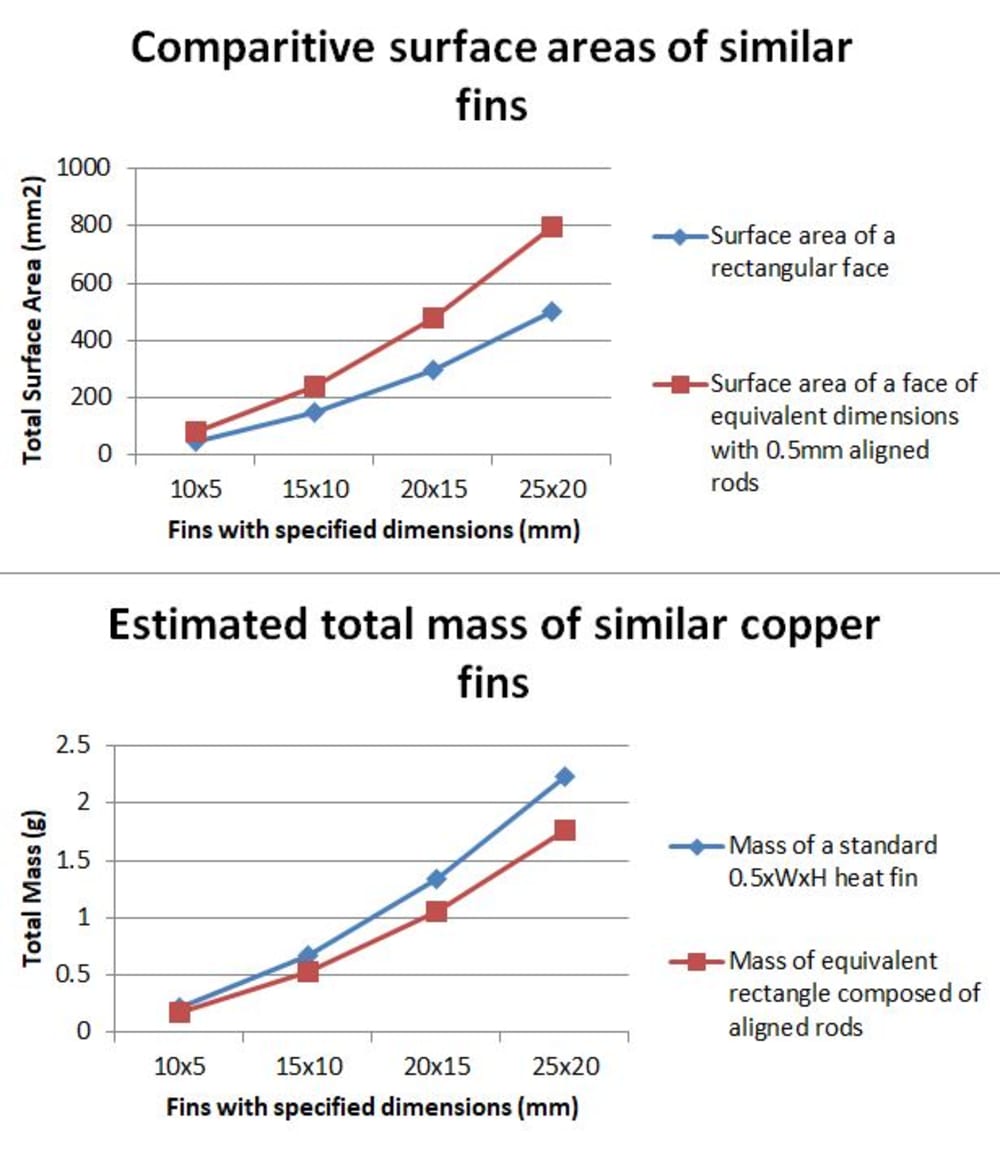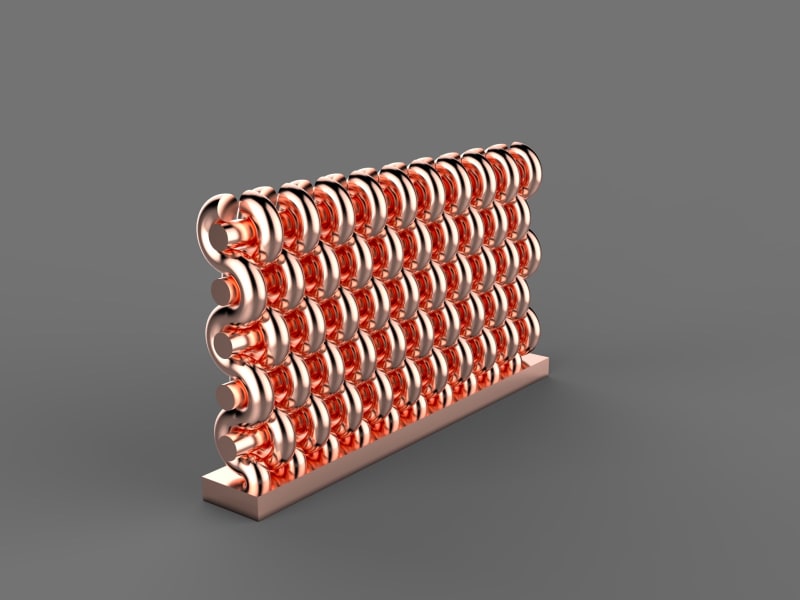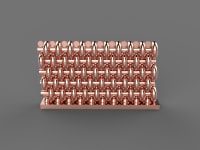Heat sinks work by conducting heat away from a source to fins that use convection, and their wide surface area to dissipate heat into the surrounding environment. The convective heat loss formula, Q=Hc*A*(T1-T2), shows that the surface area, A has a direct impact on the overall amount of heat that is transferred. Therefore, the most efficient heat sinks have fins with as much surface area as possible, and modern lightweight computers require that those fins have a high surface area to mass ratio.
This design increases the surface area of heat sinks while reducing the total mass, greatly increasing this ratio, and therefore the efficiency of heat sinks overall. It achieves this by replacing standard heat fins, typically composed of solid, regularly shaped fins with rigid woven meshes of metal threads. By using a mesh of cylindrical metal threads, this design achieves a much higher surface area to mass ratio.
My example calculations show that a simplified version of this design, constructed of aligned metal rods, would have 50-65% more surface area per face than a traditional heat sink fin of equivalent shape, and use 22% less mass per fin. This is a significant reduction in weight and a massive improvement in heat transfer efficiency. The 50-65% increase in surface area, according to the convective heat loss formula mentioned earlier, translates to a 50-65% increase in the efficiency of heat transfer per fin. Such a large increase in efficiency could have further knock-on effects on weight and space-saving measures, such as heat sinks needing fewer fins, and becoming smaller and lighter without losing any performance.
Woven metal meshes are already a common product used for artwork, screens, and filters. Rigid meshes could be produced by increasing the diameter and density of the threads. With further research, specialized meshes could be created with additive manufacturing technology like CO2 laser manufacturing that would create the carefully controlled shapes that improve the surface area and weight even further.
By improving heat sinks to be lighter and more efficient, this innovation would be beneficial to nearly every market involving electronics. It could be applied to create lighter computers and cell phones, lighter microchips for satellites, airplanes, and automobiles, and larger, more powerful supercomputers and server farms for the vast digital infrastructure that drives so much of our modern world. Computer servers and data farms for large tech companies like amazon and google could benefit from servers with improved heat dissipation that would be easier to keep cool, improving their network’s ability to serve customers quickly and reliably. For commercial airlines and aerospace companies, the reduced weight from having lighter heat sinks could result in hundreds of thousands of dollars in saved fuel and reduced greenhouse gas emissions, or lighter satellites that are easier to launch and maintain in orbit.
Like this entry?
-
About the Entrant
- Name:David Silverstein
- Type of entry:individual
- Software used for this entry:Solidworks
- Patent status:none








